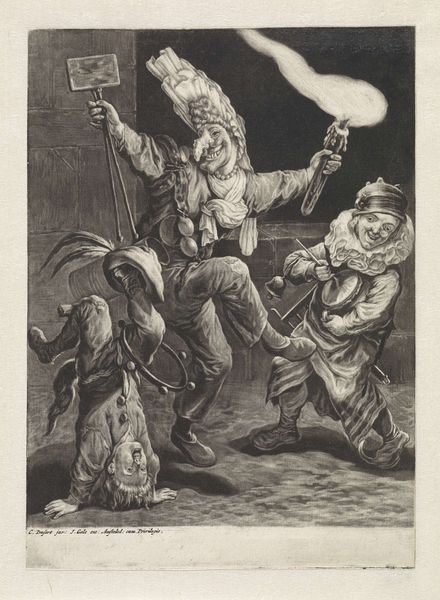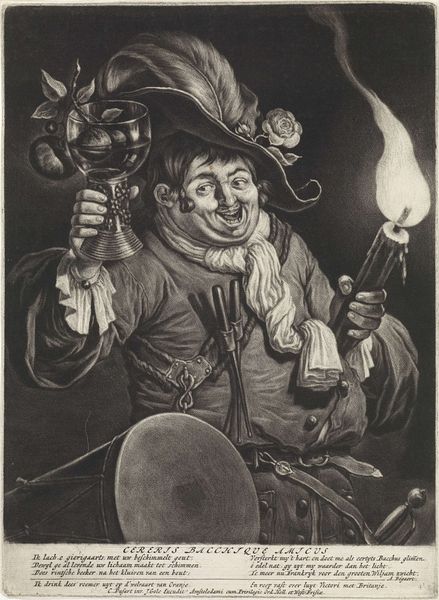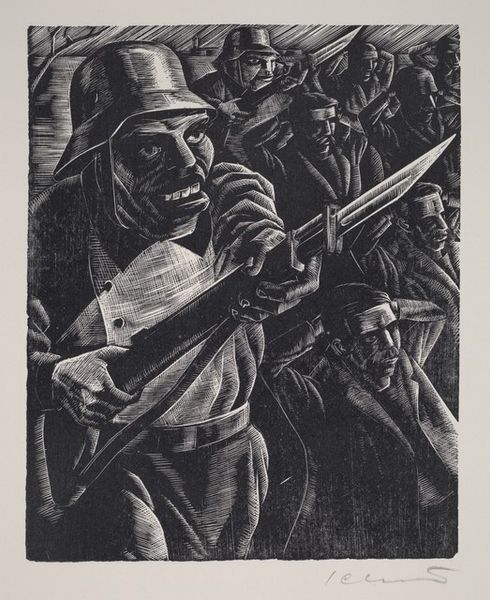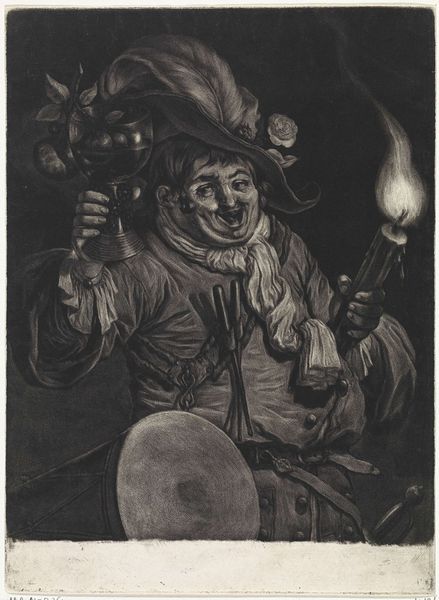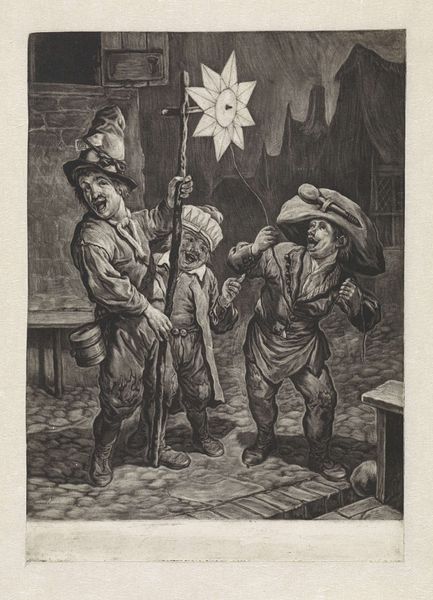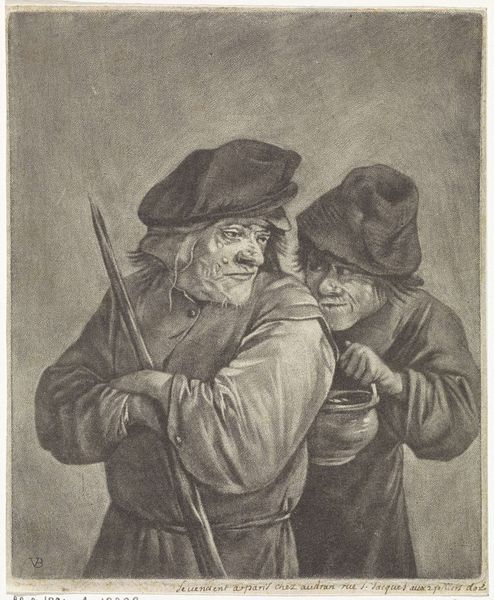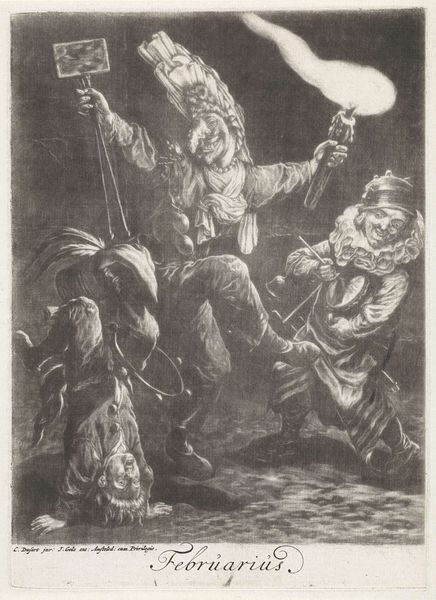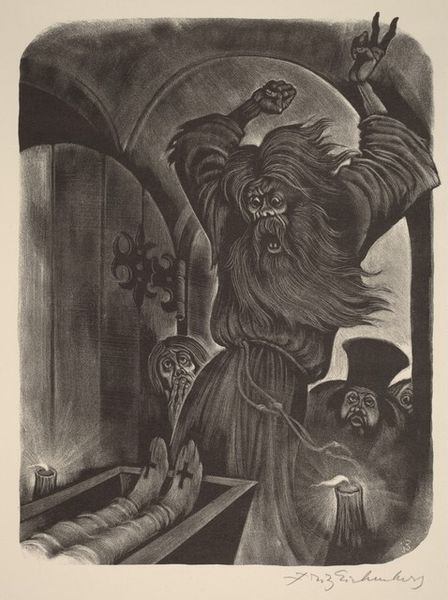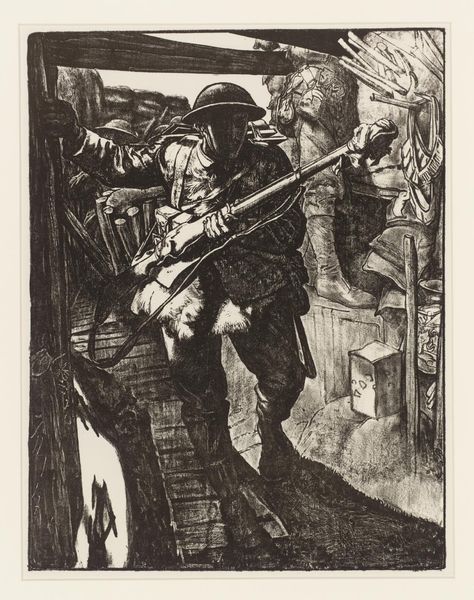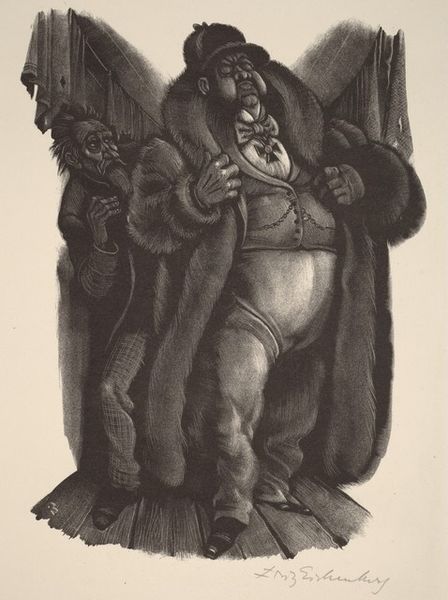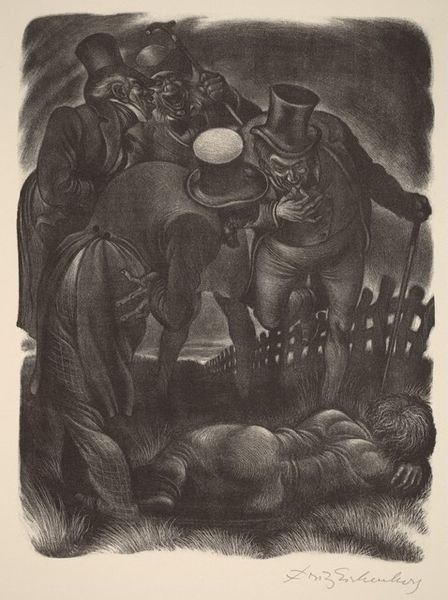
print, etching
#
portrait
#
narrative-art
#
baroque
#
dutch-golden-age
# print
#
etching
#
caricature
#
caricature
#
figuration
#
genre-painting
Dimensions: height 248 mm, width 178 mm
Copyright: Rijks Museum: Open Domain
Curator: Before us is "De man met een vuurpijl, met toeschouwers," or "The Man with a Firework Rocket, with Spectators," an etching attributed to Jacob Gole, likely created sometime between 1695 and 1724. Editor: My first thought? It's theatrical. The chiaroscuro, the exaggerated expressions, it’s like a scene lifted straight from a play. All that dark etching giving texture to the forms of people holding devices, which make a real sense of the mood of an exciting nighttime activity! Curator: Indeed. Given the date, we can explore it as a commentary on spectacle and political power. Fireworks were often used to celebrate military victories or political events. This connects to power relations embedded within the performance itself – the man controlling the firework perhaps symbolizing leadership. The Dutch Republic had emerged as a major maritime power during the time period portrayed. Editor: I'm immediately drawn to the materiality of the print itself – the copper plate, the acid used in the etching process. Prints made works on paper more widely available and affordable, which meant these types of social commentaries spread more effectively. Consider the labor that went into its creation, the engraver, the printer – all contributing to this singular image. Curator: Precisely, this accessibility allows the imagery to take on a life of its own, shaping public perception and solidifying cultural narratives around national identity. The act of caricature employed here— look at the grotesquely emphasized features—served to communicate cultural anxieties, especially anxieties concerning other nations that were being lampooned at the time. Editor: And think about the reception. How would ordinary citizens consume an image like this? What kind of dialogue did it provoke in coffee houses and taverns? Curator: Yes, and we must also ask, whose voices are privileged in these displays? While intended as entertainment, fireworks often reflected, reinforced, and sometimes challenged social hierarchies. Who gets to create, who gets to celebrate, who gets to consume—these are not neutral questions. Editor: Examining this etching makes me appreciate how art, through its production and imagery, mediates lived experiences and how techniques made accessible production of the material itself. Curator: And by engaging in an intersectional reading of "De man met een vuurpijl", we understand not only the formal composition but it helps decode some fascinating sociocultural dynamics.
Comments
No comments
Be the first to comment and join the conversation on the ultimate creative platform.

